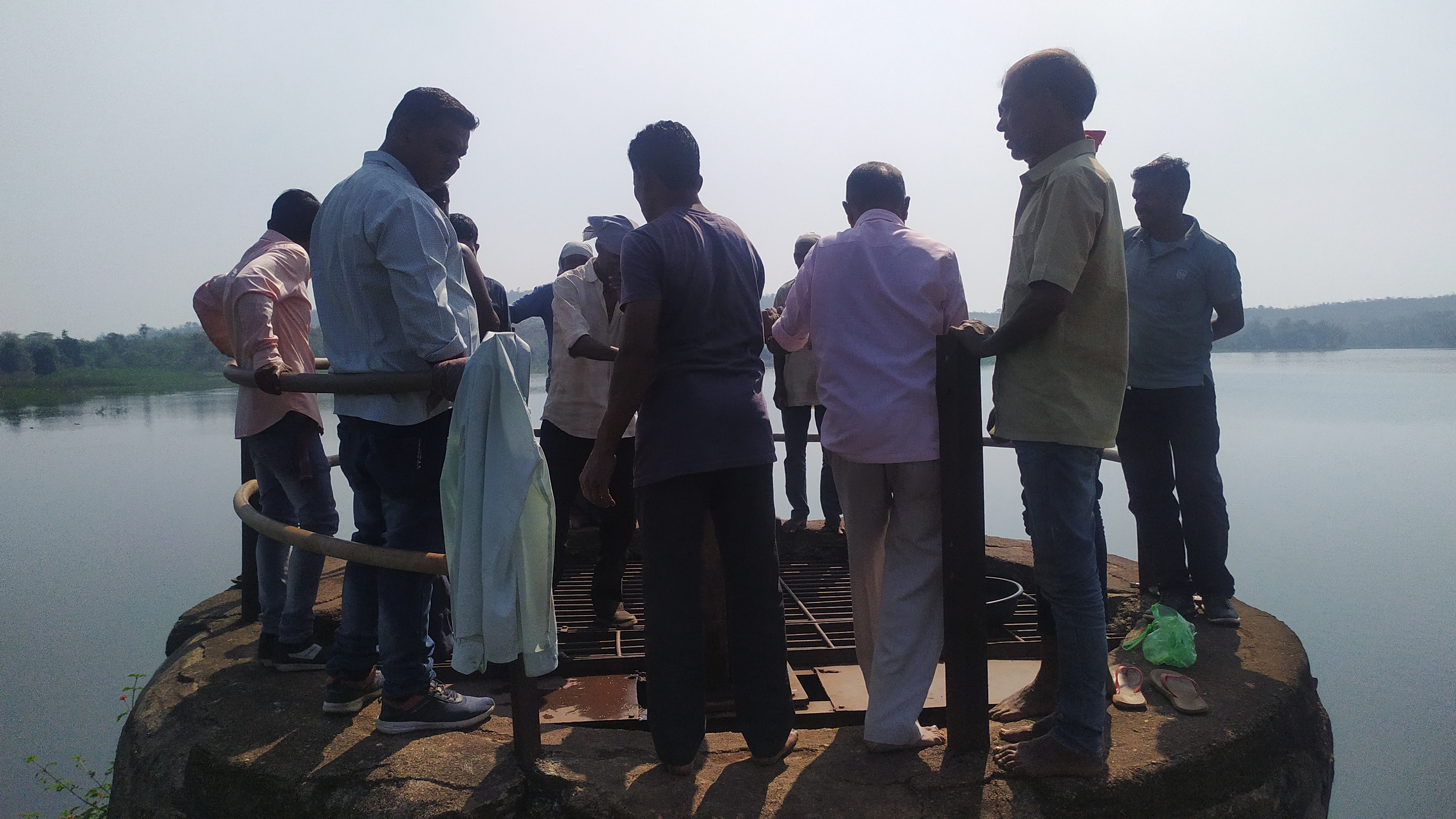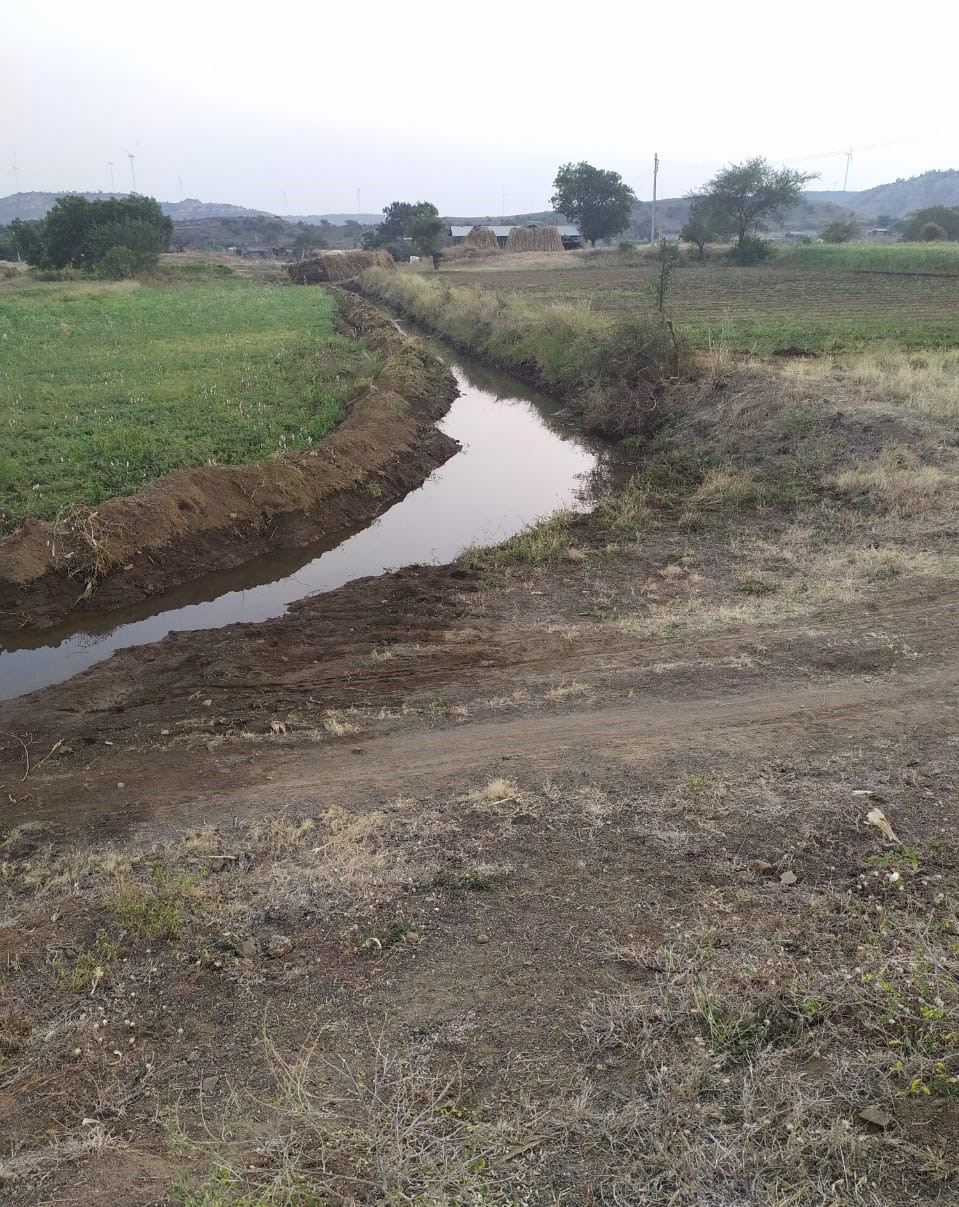
This case study documents the experiences of Canal Repairing of Pawla MI Tank in Nandurbar district of Maharashtra. It highlights the approach strategies applied by the Development Support Centre (DSC) and the lessons learnt from field implementation.
Why Participatory Irrigation Management?
In Participatory Irrigation Management (PIM), irrigation water is conceptualised as an economic good. The purpose of PIM is to manage water in a decentralised manner while allowing the local community to play a significant role in its management and governance.
The PIM intervention is necessary as the government-owned irrigation systems are poorly maintained because of a wide range of factors, which include:
- Lack accountability of government departments in terms of quality supply and revenue generation.
- There are no effective coordination mechanisms between different departments that deal with agriculture and irrigation.
- Insufficient allocation for maintenance and operation because of poor water pricing policies
- Subsidies on irrigation water are insufficient, which do not even cover the capital costs for regular maintenance in most cases.
- Poor service and inequitable distribution of water dissuades farmers from paying
- Inadequate irrigation water availability at the lowest outlets
- Low yields that occur because of ineffective water use technologies
Institutional limitations, such as centralised governance and top-down approaches, make it difficult for departments to connect with farmers and respond to their needs.
The key to fixing the flawed functionality of the sector is to involve the community actively. A decentralised approach of management and governance of water resources enables increase in water user participation in decision-making and investments, leading to a boost in management incentives, accountability, agricultural and economic productivity and cost recovery.
Background of PIM intervention
Pawla MI irrigation tank is an ancient source of irrigation water used by local farmers. According to the farmers in Pawla and canal network villages, there were no issues earlier and the irrigation water was adequate up to tail-end until 6-8 years ago. However, poor maintenance and ignorance of canal structures in recent years have resulted in massive water losses.
Intensive agricultural activities have contributed to the escalation of water shortages in the region, leading to changes in cropping patterns. There has been a sharp shift in cropping patterns based on the availability of water. In the past few years, farmers have shifted from water-intensive crops like wheat during early canal construction to less water-intensive crops like coriander, mustard, and gram during the rabi season.
Implementation strategy for community management and governance
The DSC started the community interaction intervention model, which began with PRA exercises all over the potential project areas. Following PRA, agricultural production and practices, as well as the canal and tank irrigation networks were managed. In the early phases of the project, a community mobilisation-focused group was formed, along with WUA committees, to identify and understand the needs and priorities of farmers.
The community was expected to contribute 30 percent of the costs of restoration works. This, however, required enormous effort on DSC’s part in order to establish its trustworthiness within the community. DSC offers cash, kind, or labor to the physical work as its mode of community contribution.

The WUA meets once a month to discuss operational details such as physical work, expenditure, contribution received, resolutions passed for administrative purposes, and the selection of members for training and exposure visits. Besides these formal meetings, it also holds informal ones for regular cleaning, maintenance, manual repairs, and water distribution. It should be noted that all the meetings are still being held.
The major push towards the project intervention was to expedite the rehabilitation work along the canal because of poor infrastructure and wasteful canal network system. The DSC team, WUAs, and farmers conducted participatory walk surveys to identify problems and their magnitude. While the collected money was spent on physical work, the DSC and the WUAs gained confidence to execute these projects together.
Initially, the process of community governance was difficult, but gradually, participation strengthened the sense of ownership while reinforcing the awareness of collective responsibility and accountability. In terms of community participation, the team found that it exceeded expectations. In addition to setting an example for collective community governance, the WUAs also met the needs of participatory irrigation management.

Impact of the PIM intervention
Assessing the qualitative impacts of the intervention was a challenging endeavor. However, changes in the economic and social parameters were taken into account for better understanding. The cleaning of the canal network and desilting of minor canals and distributaries led to an increase in irrigated area under the canal system, shift in cropping patterns, changes in farm input including high yielding varieties, and an increase in productivity and total production.
The cleaning of the tank canals benefited all the existing farmers, including the tail-end users. We could see a more equitable distribution of irrigation water as the WUA set the bylaws in such a way that the water was first supplied to tail-end users and then to the head.
In addition, the major land under canal irrigation also witnessed a change in cropping patterns, as grams, chilly, onions and rabi vegetables replaced maize, jowar, wheat and cotton. Now the farmers plan to take economically remunerative varieties.
Previously, farmers from Pawla village were only growing coriander due to a lack of irrigation water, but this year they have planted wheat as well. They have already received three rounds of water, and they expect a fourth round at the end of April.
As a result of the physical restoration work, it will be too early to determine whether agricultural productivity will be enhanced. The effects of DSC's agriculture extension activities of facilitating improved irrigation and changes in cropping patterns are expected to result in 30 percent improvement.
The village at the tail-end that received a single round of water every year since the last 4-5 years, received two rounds of water this year and has seen around 100 hectares of land which was under seepage for approximately 10 years, restored.
Among the social impacts of the intervention were the increased awareness and unity among farmers implementing PIM. Furthermore, the farmers in the canal network observed improved canal restoration works that were monitored by WUAs, which held accountability towards these works. WUAs showed good coordination among each other to provide quality governance in the irrigation system.
Lessons learnt and recommendations
WUA's management committee executed its role and responsibilities exceptionally well. Having received hands-on experience and trainings, the WUA members who were initially hesitant to take on operation and maintenance work on their own gained confidence and handled the process quite well, demonstrating excellent managerial capabilities.
The constitution of a farmers' institution such as the WUA offers several benefits, including monitoring of physical works, controlling costs, offering equitable distribution of water, especially to tail-end users, and ensuring efficient operation and decision-making processes.
A number of recommendations are provided for the effective implementation of the PIM project:
- The WUAs must develop their managerial and professional capacities as they are directly responsible for managing and governing canal irrigation, and they have a dynamic nature.
- WAUs need to document the implementation process as they require support from the Water Resources Department and other government departments for keeping records.
- Integration of different sectors on water use with organisational efforts are needed for the convergence of programs, schemes, and funding sources.
- For an effective implementation of the project and deriving sustainable solutions, the project must focus on people, their needs and geographical location.
- WUAs should engage with Panchayat Raj Institutions, since they play an important role in the management and governance of water.
The way forward
Ensure technical work flows for the WUAs through introducing water conservation programs and volumetric water pricing, which will result in further improvement of the physical infrastructure of the canal, such as canal lining, installation of water control gates, and water measurement devices.
In order for WUAs to be financially secure, several steps must be undertaken, such as fixing water rates, charging-collecting-retaining water charges, and constituting WUAs as a Producers' Company. Chilly is an important cash crop for the region, so the WUAs hope to capitalise on its market and crop pattern by establishing a Chilli Producers Company.
Suraj Mondal is a Livelihood Expert at the Development Source Centre (DSC), Ahmedabad. DSC is a resource organisation that provides knowledge-based support to non-government organisations (NGOs), corporate houses (CSRs), government agencies, community-based organisations, and other stakeholders in Participatory Natural Resource Management (PNRM) and sustainable livelihoods.
/articles/participatory-irrigation-management-brings-water-back-communities